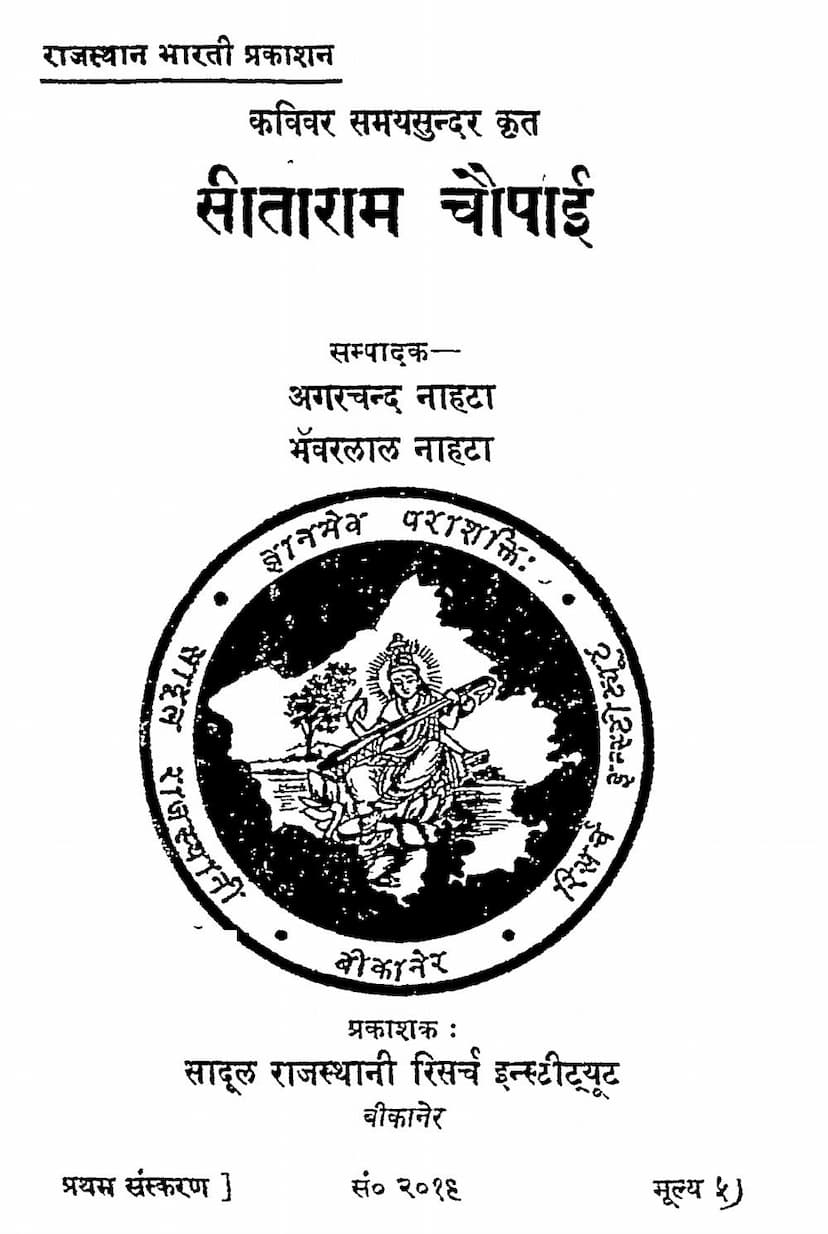Sitaram Chaupai
Added to library: September 2, 2025
Loading image...

Summary
This document is a promotional text from the Sadul Rajasthani Research Institute, Bikaner, highlighting their extensive work in preserving and promoting Rajasthal and Hindi literature. The main focus is the publication of "Sitaram Chaupai" by Kavir Kavir Samaysundar.
Here's a summary of the key aspects:
About the Sadul Rajasthani Research Institute:
- Establishment: Founded in 1944 with the inspiration of Shri K.M. Panikkar and the patronage of Maharaja Shri Sadul Singhji Bahadur of Bikaner.
- Mission: To serve Sanskrit, Hindi, and especially Rajasthani literature, and to promote the comprehensive development of the Rajasthani language.
- Activities: The institute has been actively engaged in various literary activities for 16 years, including:
- Compilation of a "Vast Rajasthani-Hindi Dictionary" (collecting over two lakh words).
- Compilation of a "Vast Rajasthani Idiom Dictionary" (editing approximately ten thousand idioms with Hindi meanings and Rajasthani examples).
- Publication of modern Rajasthani literary works.
- Publication of the renowned research journal 'Rajasthan Bharti'.
- Research, editing, and publication of ancient and important Rajasthani literary texts.
- Celebration of the birth and death anniversaries of literary figures.
- Organization of weekly literary gatherings and lectures by renowned scholars.
- Establishment of the "Mahakavi Prithviraj Rathore Asan".
About "Sitaram Chaupai":
- Author: Mahopadhyay Kavir Samaysundar, a great scholar and poet of the 17th century, known for his vast literature in Prakrit, Sanskrit, Rajasthani, Gujarati, and Hindi.
- Significance: This is Samaysundar's largest work in Rajasthani, comprising 3700 verses (श्लोक). It narrates the Jain tradition's version of the Ramayana story.
- Content: The story is divided into nine sections (खण्ड) and elaborates on the life of Rama and Sita, including events like their birth, marriage, exile, interactions with various characters, the war with Ravana, and their eventual renunciation and spiritual journey, all within a Jain philosophical framework.
- Language and Style: The language is described as pure medieval Rajasthani, with influences from Gujarati, Sindhi, Urdu, and Persian due to the author's travels. The style is simple and engaging, enriched with proverbs and idioms, creating vivid imagery.
- Unique Features: The text uses various meters (छन्द) and folk song styles (देशियाँ/ताल) for its verses. The editors have included a summary of the story, related articles, and a glossary of local terms.
- Sources: The publication has utilized multiple manuscripts and consulted scholarly articles for its editing.
Key themes and context:
- Jain Ramayana: The text presents a Jain interpretation of the Ramayana, likely drawing from Jain Puranas and other Jain narrative traditions. This interpretation might differ from the mainstream Hindu versions in its portrayal of characters and events, emphasizing Jain principles like ahimsa (non-violence) and karma.
- Literary Preservation: The publication of "Sitaram Chaupai" is part of the institute's larger mission to unearth, edit, and publish valuable ancient Rajasthani literary treasures.
- Financial Support: The text mentions receiving a grant of ₹15,000 from the Ministry of Scientific Research and Cultural Affairs, Government of India, matched by an equal amount from the Rajasthan government, enabling the publication of 31 books in that fiscal year, including "Sitaram Chaupai."
In essence, the "Sitaram Chaupai" is presented as a significant literary work that offers a unique Jain perspective on the epic Ramayana, brought to light through the dedicated efforts of the Sadul Rajasthani Research Institute.